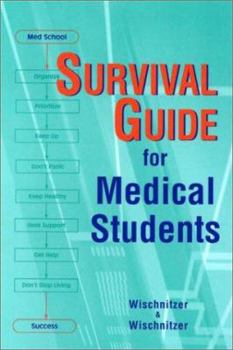Survival Guide for Medical Students
A practical guide for helping medical students understand the inner workings of medical school education and postgraduate training processes. The authors advise on "what to expect" and "how to respond" to a number of issues confronting students, including educational and psychological transition to medical school, attrition, traditional and non-traditional curricula, preparing for exams, and choosing a course. Also offered is a preview of what to expect in medical practice.
Format:Paperback
Language:English
ISBN:1560534729
ISBN13:9781560534723
Release Date:May 2001
Publisher:Hanley & Belfus
Length:266 Pages
Weight:0.80 lbs.
Dimensions:0.5" x 6.0" x 8.9"
Customer Reviews
1 rating
Excellent information, a very detailed book.
Published by Thriftbooks.com User , 21 years ago
This is the first book that I read about the inside of medical school. And I think that I don't need to read another one. The information that it has amazes me, from the very beginning till the end of whole medical school education; it is truly a well-done book. It gives me the inside look way ahead of my medical career. On the other hand, it has some shortcomings. It has some minor grammatical or word programs; such as they confused "effecting" with "affecting." And something else, which I already forgot.Also when it talked about the history of medicine, it only concentrated on the western world. It mentioned something about Egyptian medicine, etc. It did not talk about anything about the Asian medicine, as we all know, the Chinese have been practicing their kind of medicine many many years ago. At last, it talked about the German scientists used humans for live experiments. I suppose that that is what the western students have been educated about. The authors did not say anything about the evil Japanese "scientists" who used Chinese to do their grueling live in-human experiments. I think that they should definitely include that in the book.Also, they should use a bigger font. I am a young man, but even






